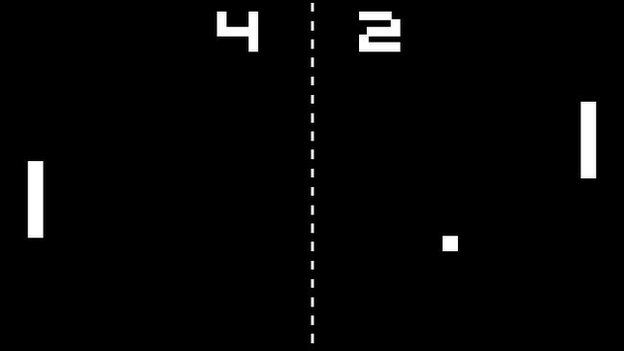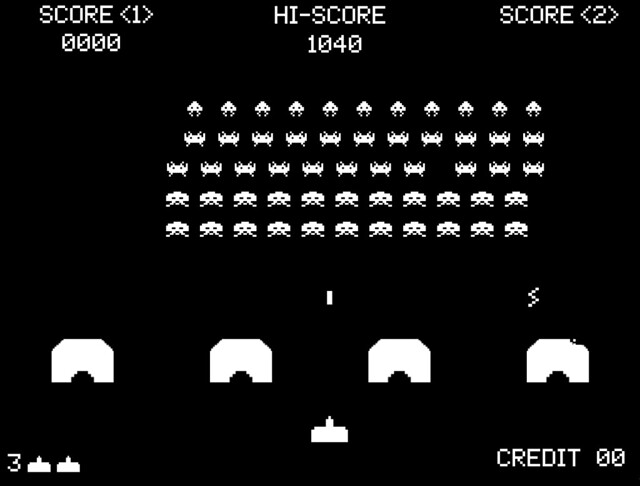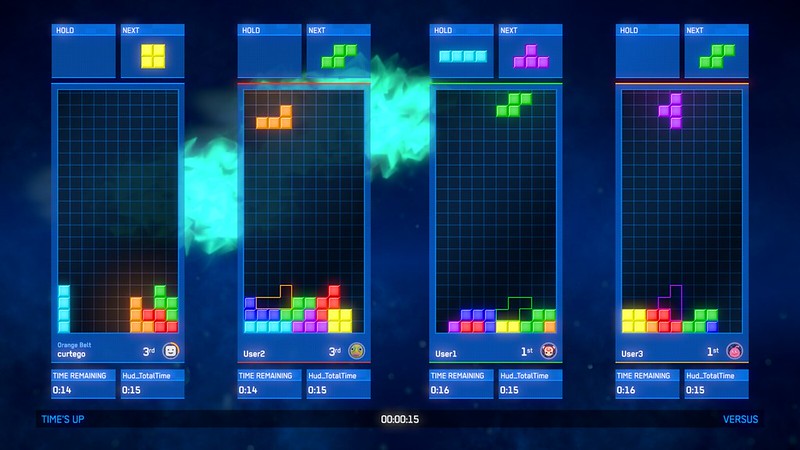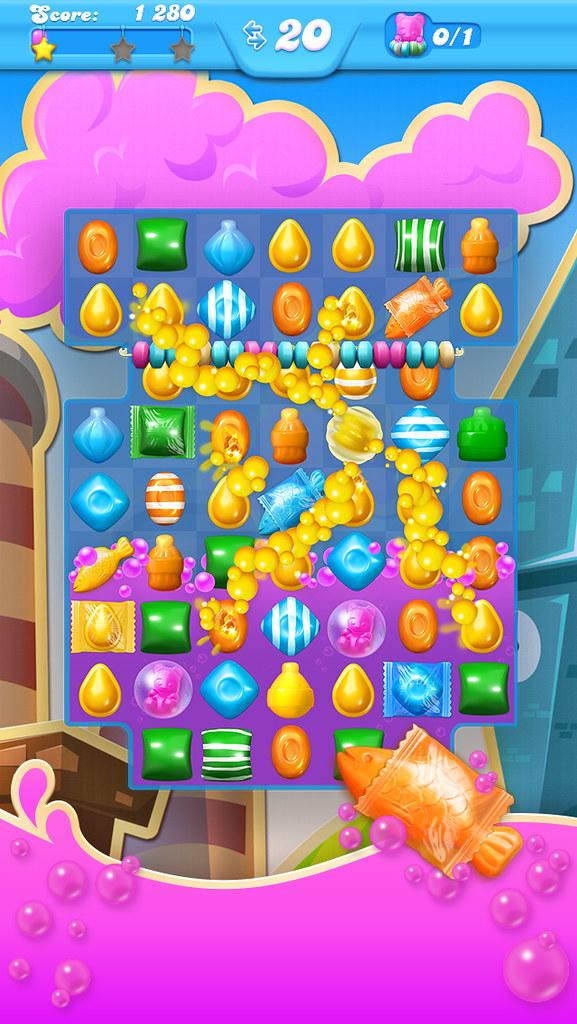
We chat with the legendary designer behind some of the most memorable coin-op classics about the first game he remembers playing, which game he wishes he made, and more.
Housemarque’s recent Nex Machina was notable not just because it was yet another fantastic arcade shooter from the studio, but also the game’s development was in collaboration with legendary game developer Eugene Jarvis.
Jarvis birthed the top-down shooter genre with seminal ’80s classic Robotron: 2084 and perfected it in his glorious ’90s sci-fi co-op shooter Smash TV. With Nex Machina being as much a spiritual successor to those as it is to Housemarque’s other works, such as PS4 launch title Resogun, we decided it fine time to sit down with the man himself and find out his own personal favorite games.
1. The first game you remember playing…
“Pong. We played Pong a lot with my sister and I think she was even better at it. But, Spacewar was the first one I remember seeing at Stanford. It took money and ran on a refrigerator sized terminal. It was a predecessor to Asteroids in a way, but it was player vs. player. Similar to Pong in that way, but Spacewar was really complicated in comparison.
“Really all the first games were PvP, as it was very difficult to code a good computer opponent, so playing against another person was much more viable. It’s funny how this still holds somewhat true even these days with games like Street Fighter or even arena shooters like Overwatch.”
2. The game made you want to become a developer…
“Space Invaders. I used to actually make pinball games before that, but seeing Space Invaders opened up the possibilities of what video games could be. Before that they were just novel entertainment with very little depth. A small, 10 minute spike of fun.
“Space Invaders had a huge impact with its alien enemies and artificial A.I. It was the first time I really noticed the potential of the ‘man vs. machine’ setup, which later had huge success with Pac-Man, Asteroids and others.
“Pinball, in essence, was a very strict PvE setup where you always had the same elements of bumpers, lights, sounds and the metal balls. That was a lot of fun, but you could only do different themes and effects, so it was a bit confined.
“Space Invaders was the first time I really noticed a new audio visual world that really had no restrictions. The aggressive movement of the invaders hunting you down made your heart beat faster. It was a real interactive experience. As long as your imagination and the tech allowed it, the sky was the limit. After that, pinball seems a bit limited and video games really had a hold on me.”
3. The game you wish you had made…
“Well, that’s a good question. Hindsight is 20/20. For example, why didn’t I make Candy Crush? As a developer you are trying to occupy the mindset of the people out there, so you always try to create something that is on the nerve of the human condition.
“As far as huge mega budget games go, I really don’t wish I made those, because they are really a product of masses of ideas coming together to form something huge and great. Those are not really a product of the author, but rather a hundred lifetimes of work.
“The type of game I wish I made are the simple things where I think like I could have done that in, like, two nights. Like Tetris, it could have been done in the early ’70s, just a very classic simple formula. Brilliant concept and brilliant execution. The kind of title you hope your brain could come up with, before someone else does.
“Also something like Candy Crush which is an age old formula, but it’s executed perfectly for the modern audience.”
4. The game that made you rethink the medium…
“That would be Candy Crush, not just because of the mobile revolution side, because there was Angry Birds and other great ones. Candy Crush is just a match-three game, and that formula was already made well in Bejeweled. Taking that to the next level really makes you think human emotions and how to work out the basics of gaming. I admit that, yes, it does have all these pay-to-play and paywall-type elements, but it almost makes the achievement more valuable to the player. As you play on you become more engaged with the title and, come level 1000 or so, you are really in deep.
“This is, in a way, close to what we did back in the day with arcade cabinets, where you could spend $1,000 becoming the best Robotron player. Skill and endurance were the key elements there – that and your wallet. With Candy Crush it’s your wallet and patience. But yeah, that really made me rethink the way games are played and that things are really changing.
“In a classic skill game your skill allows you to only to get so far. With this new approach you could go much further even if your skill didn’t let you. That’s somewhat similar to what we did with Smash TV; a lot of the games of late ’80s you could buy ‘Continues’. So more people could see the ending if they paid more.
“It changed the system. Now bad players could go all the way to the game’s end. Funnily, this also made a lot more money as it turns out there are a lot more bad players than good players, so it was a win-win in that sense! It made us question what a game was. Was it skill based? Or is it an experience you pay for, like a joy ride. It was wonderful to see that then and still see this value proposition take shape.
“Even when Everquest came out, people were gold-mining assets and selling them online. Others were buying them and, in a sense, cheating their way to the top, but that really broadens the sense of what a game is. Others want to be on top easily and others want to grind. It’s a wide spectrum and to many it is also an obsession or a compulsive disorder, but in the end they are still playing the same game.”
5. The last game you saw the end credits for…
“Hate to admit it, but it’s likely Smash TV.
“A funny thing with that was that we wanted something that meant if you beat the game we’d still want to you to come back. So during development we came up with the concept of ‘pleasure domes’ – magical places only accessible if you met certain conditions. We never implemented them, but that didn’t stop the rumour that started circulating the arcade halls as people speculated as to how to get to there.
“It became an urban legend, even though they never existed in the game. People would go on to bulletin boards and claim that they had found them. So our stupid lie turned into the perfect end game that people always tried to reach.
“It was very similar to the ‘Polybius’ cult, people that kept saying that they’ve played it. Another one called ‘Oops’ was a vector monitor game, a prototype where you played an egg trying to protect itself from insemination. It was a one off game in just one location in Stanford, but now it’s just a legend that seems to have disappeared.”
6. Your favorite multiplayer game…
“I love Spacewar and that was player vs player. It was developed at MIT in 1960 and it had gravity, and a sun that you could crash into. A very rich gameplay experience with a lot of different moves like the hyperspace that would transport you out of the way of shots. It also had ship damage that actually cripple your abilities while playing. Making you just a nose cone that could shoot, but had no movement control. The first video game in many ways.
“The graphics were surprisingly silky smooth with their vector graphics of that time – it was a very smooth video experience. Really close to modern 4K in a lot of ways. Just in black and white of course.”
















Comments are closed.
18 Comments
Loading More Comments